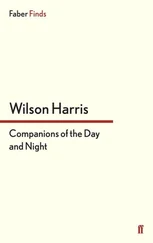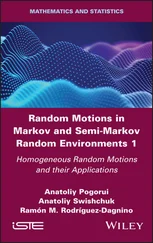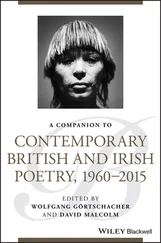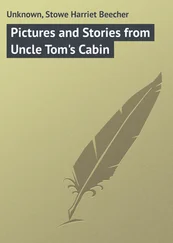A Companion to Motion Pictures and Public Value
Здесь есть возможность читать онлайн «A Companion to Motion Pictures and Public Value» — ознакомительный отрывок электронной книги совершенно бесплатно, а после прочтения отрывка купить полную версию. В некоторых случаях можно слушать аудио, скачать через торрент в формате fb2 и присутствует краткое содержание. Жанр: unrecognised, на английском языке. Описание произведения, (предисловие) а так же отзывы посетителей доступны на портале библиотеки ЛибКат.
- Название:A Companion to Motion Pictures and Public Value
- Автор:
- Жанр:
- Год:неизвестен
- ISBN:нет данных
- Рейтинг книги:3 / 5. Голосов: 1
-
Избранное:Добавить в избранное
- Отзывы:
-
Ваша оценка:
- 60
- 1
- 2
- 3
- 4
- 5
A Companion to Motion Pictures and Public Value: краткое содержание, описание и аннотация
Предлагаем к чтению аннотацию, описание, краткое содержание или предисловие (зависит от того, что написал сам автор книги «A Companion to Motion Pictures and Public Value»). Если вы не нашли необходимую информацию о книге — напишите в комментариях, мы постараемся отыскать её.
A Companion to Motion Pictures and Public Value
Companion
A Companion to Motion Pictures and Public Value
A Companion to Motion Pictures and Public Value — читать онлайн ознакомительный отрывок
Ниже представлен текст книги, разбитый по страницам. Система сохранения места последней прочитанной страницы, позволяет с удобством читать онлайн бесплатно книгу «A Companion to Motion Pictures and Public Value», без необходимости каждый раз заново искать на чём Вы остановились. Поставьте закладку, и сможете в любой момент перейти на страницу, на которой закончили чтение.
Интервал:
Закладка:
In all of the films that were discussed in this section, hope for heech turns out to be emancipatory, both on the narrative level and for the spectators. In most of these films, there is no happy ending, sometimes no ending at all. The hope for nothing eventually ends in nothingness, opening a venue in the spectators’ minds to conclude their own narrative.
The public aesthetic and artistic value of Iranian cinema is indebted to the intrinsic cultural values of Iranian culture, which in turn has been influenced by the cross-cultural and global aesthetic and artistic currents. The public artistic value of Iranian cinema as the dominant form of cultural expression made it a new pedestal for collective cultural activities among filmmakers and filmgoers. Iranian cinema outside of the political borders of the country has public value for the Persian, Baluchi, Urdu, Pashtun, Turkish, Turkmen, Arabic, Kurdish, and Lurish speaking communities in the Near and Middle East since it represents a shared cultural proximity in terms of linguistic, religious, and cultural ties.
Iranian cinema diversified the global aesthetic and artistic value of films. In the past 40 years, it has brought visibility to a culture and a nation that were otherwise undermined due to political isolation. The aesthetics of the curved sarv /cypress made it possible for an independent and auteur-based cinema to flourish under a totalitarian political system. While the majority of Iranian films did not adopt the Third Cinema aesthetics, the filmmakers’ hope for heech /nothingness led to a more liberated art form and a liberating and transcendental cinematic experience for the spectators. 6
Notes
1 1The notion of cinema as cultural capital is extensively studied in Austin (2016).
2 2Nasser al-din shah was an ardent painter, poet, photographer and fiction writer.
3 3There are different accounts regarding the establishment of the first public cinema in Iran. Some sources indicated that missionaries opened the first cinema in Tabriz, others credited Alek Saginian as the founder of the cinema. What is consistent in both narratives is that Alek Saginian was actively involved in the administration of the cinema in Tabriz from the beginning until the end. To see the different accounts, refer to Omid (1996, p. 100); Armenians in Iranian Cinema (2004, p. 12); Naficy (2011, p. 27); and Yasamin Molana’s “History of Cinema in Tabriz” in mehrnews.com(published in 22 Shahrivar, 1393 Solar Hijri Calendar). https://www.mehrnews.com/news/2369174/آن-سوی-تاریخ-تا-این-روزهای-سینما-در-تبریز-سینما-سولی-خورشیدی.
4 4All the poems in this article are quoted from ganjoor.net(accessed October and November 2020).
5 5The notion of Heech has influenced modern Iranian art. Parviz Tanavoli is a sculptor and painter who is famous for his heech designs. He indicated that: “my nothingness (heech) was not tinged with the cynicism of Western artists. Mine was the nothingness of hope and friendship, a nothingness that did not seek to negate. In my mind, it was not life that amounted to nothing, but rather nothing which brimmed with life itself.” (quoted in Tanavoli’s website: https://www.tanavoli.com/about/themes/heech). Accessed October 4, 2020.
6 6I would like to thank Professors Hjort and Nannicelli for their invaluable comments. My son Mahan Navabi read and edited this article and shared his thoughts with me. I would like to extend my gratitude to my mentor, Professor Tavakoli-Targhi and my colleagues Professors Manijeh Mannani, Mahdi Tourage, and Asghar Seyed Ghorab who shared ideas and resources with me.
References
1 A’lam, Hushang. “Cypress,” Encyclopedia Iranica. Accessed Sept 20, 2020. https://www.iranicaonline.org/articles/cypress-sarv-cupressus-tourn.
2 Alizadeh, Hossein. 2013. « Love-stricken Showed Musical Instruments to Audiences.» (tarikhiran.ir, January 2013). Accessed October 15, 2020 «دلشدگان به روایت حسین علیزاده: علی حاتمی ساز را با سینما به مردم نشان داد» http://tarikhirani.ir/fa/ news/3901/دلشدگان-به-روایت-حسین-علیزاده-علی -حاتمی-ساز-را-با-سینما-به-مردم-نشان-داد.
3 Anonymous. 2011. One Thousand and One Nights. Tehran.
4 Austin, Guy, ed. 2016. New Uses of Bourdieu in Film and Media Studies. Brooklyn, NY.
5 Eagleton, Terry. 2015. Hope Without Optimism. New Haven, CT and London.
6 Hayward, Susan. 2006. Cinema Studies: The Key Concepts. London and New York.
7 Iran Cinéma Museum. 2004. Armenians in Iranian Cinema. Tehran.
8 Khoshbakht, Ehsan. 2017. “Tehran noir: Samuel Khachikian and the rise and fall of Iranian genre films.” June 23, 2017. Accessed October 25, 2020. https://www2.bfi.org.uk/news-opinion/sight-sound-magazine/features/tehran-noir-samuel-khachikian-iranian-genre-films.
9 Mehrabi, Masud. 1985. The History of Iranian Cinema: From the Beginning to 1979. Tehran.
10 Michon, Jean-Louis. 2006. “Sacred Music and Dance in Islam.” In Sufism, Love and Wisdom, edited by Jean-Louis Michon and Roger Gaetani, 153–79. Bloomington, IN.
11 Mirabedini, Hassan. 2000. Hundred Years of Fiction Writing in Iran. Tehran.
12 Naficy, Hamid. 2011. A Social History of Iranian Cinema, Volume 1: The Artisanal Era, 1897–1941. Durham, NC: Duke University Press.
13 Naficy, Hamid. 2012. A Social History of Iranian Cinema, Volume 3: The Islamicate Period, 1978–1984. Durham, NC: Duke University Press.
14 Omid, Jamal. 1996. The History of Iranian Cinema: 1900—1978. Tehran.
15 Pazyar, Adel. 2018. “Nothing Is Not Equal to Nothing.” (irna.ir, July 2018). Accessed October 5, 2020. «هیچ با هیچ برابر نیست» ایرنا. ۳ مرداد ۱۳۹۷. https://www.irna.ir/news/82981140/هیچ-با-یچ-برابر-نیسته.
16 “Persian Classical Poems by Attar, Hafez, Sa’di, Khayyam and Nizami.” ganjoor.net https://ganjoor.net. Accessed October and November 2020.
17 Sheibani, Khatereh. 2011. The Poetics of Iranian Cinema: Aesthetics, Modernity and Film after Revolution. London and New York.
18 Solanas, Fernando, and Octavio Getino. 1970. “Toward a Third Cinema.” Cinéaste 4 (3): 1–10. JSTOR, Accessed October 23, 2020. www.jstor.org/stable/41685716.
19 Stivers, Camilla. 2008. “The Ontology of Hope in Dark Times.” Administrative Theory & Praxis 30 (2): 225–39. JSTOR, Accessed October 27, 2020. www.jstor.org/stable/25610922.
20 Tadayon, Mehdi. 2012. “Non- Being and its Connotations in Rumi’s Mathnavi and Sonnets.” Mystical Studies 6 (2): 25–64.
Filmography
Akkas Bashi, Mirza Ebrahim Khan. Short Films of the Qajars , 1900.
Bayzai, Bahram. Downpour , 1972.
———. Bashu, the Little Stranger , 1986.
Crosland, Alan. The Jazz Singer , 1927.
Farhadi, Asghar. About Elly , 2009.
———. Separation , 2011.
Ghobadi, Bahman. A Time for Drunken Horses , 2000.
Golestan, Ebrahim. Secrets of the Treasure of the Jinni Valley , 1974.
Haghighi, Mani. Men at Work , 2006.
———. Canaan , 2008.
———. 50 Kilos of Sour Cherries , 2016.
Hatami, Ali. The Love-Stricken , 1992.
Hekmat, Manijeh. Women’s Prison , 2002.
Khachikiyan, Samuel. A Girl from Shiraz , 1954.
———. The Crossroad of Events , 1955.
———. Storm in Our Town , 1958.
———. Anxiety , 1962.
———. Strike , 1964.
———. The Eagles , 1985.
Kiarostami, Abbas. Where Is the Friend’s House? 1987.
Читать дальшеИнтервал:
Закладка:
Похожие книги на «A Companion to Motion Pictures and Public Value»
Представляем Вашему вниманию похожие книги на «A Companion to Motion Pictures and Public Value» списком для выбора. Мы отобрали схожую по названию и смыслу литературу в надежде предоставить читателям больше вариантов отыскать новые, интересные, ещё непрочитанные произведения.
Обсуждение, отзывы о книге «A Companion to Motion Pictures and Public Value» и просто собственные мнения читателей. Оставьте ваши комментарии, напишите, что Вы думаете о произведении, его смысле или главных героях. Укажите что конкретно понравилось, а что нет, и почему Вы так считаете.












